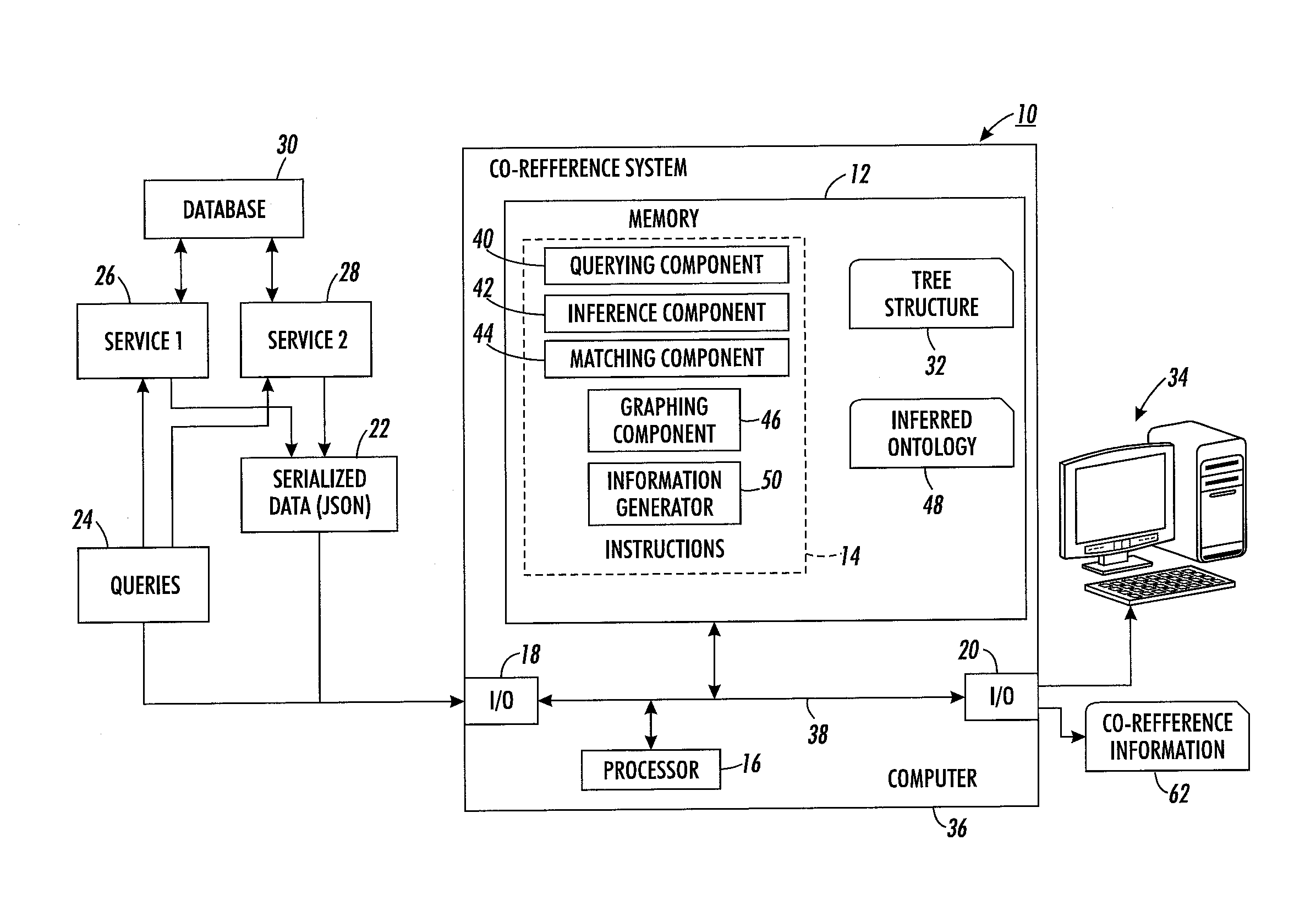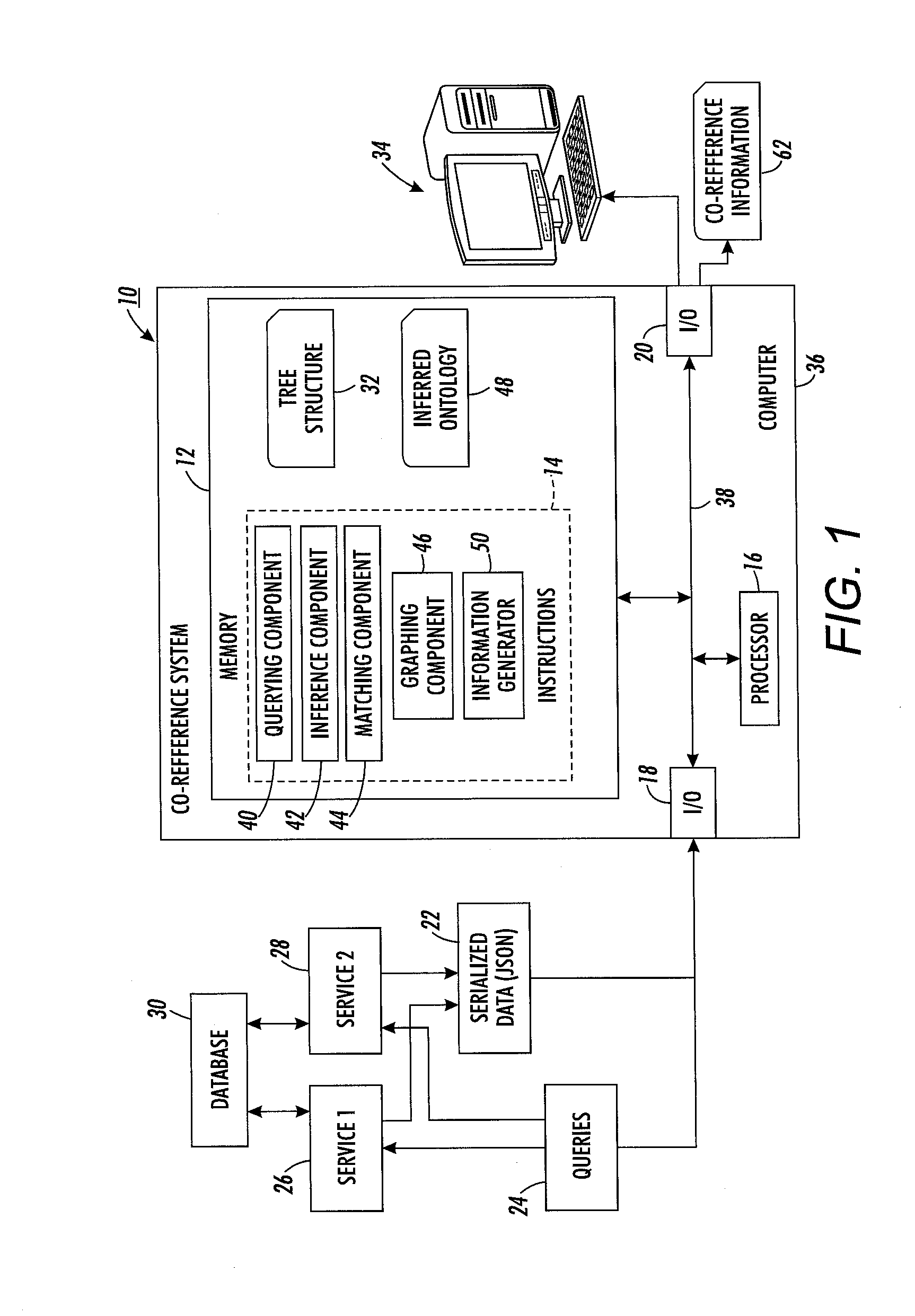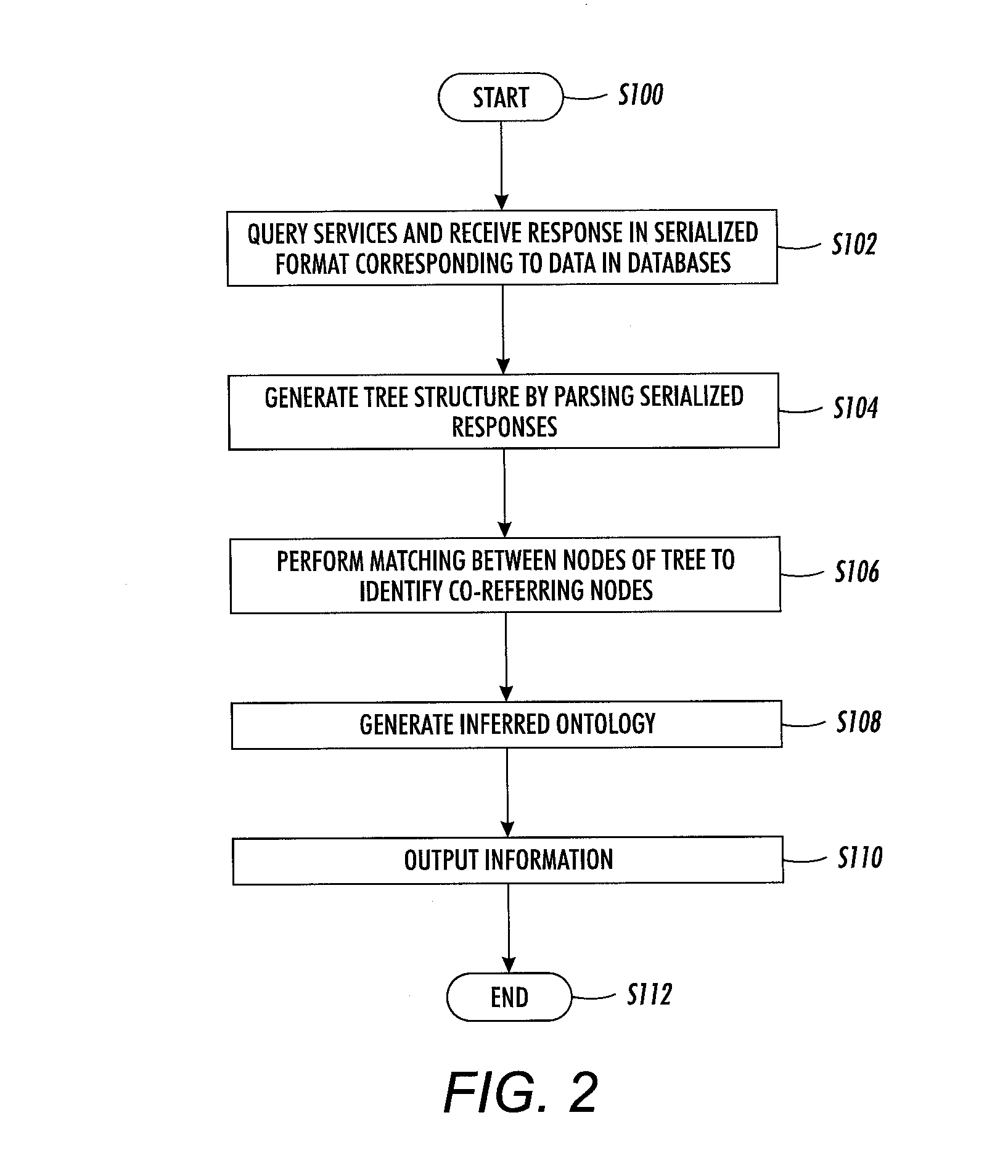Matching co-referring entities from serialized data for schema inference
a serialized data and co-referring entity technology, applied in the field of processing data, can solve difficulties in learning hierarchical relationships, and variability in structure, and achieve the effect of solving problems such as problems such as problems to be solved
- Summary
- Abstract
- Description
- Claims
- Application Information
AI Technical Summary
Benefits of technology
Problems solved by technology
Method used
Image
Examples
example
[0092]Algorithm 1 with the implementations of sim and τ described above was applied to data (illustrated in simplified form in FIG. 3) from a customer-care business and data from a public transportation provider (see Cánovas for more details on the latter). For the transportation provider, two web services are available: a “close stop” service, which identifies stops close to a given position, and a “waiting time” service, which identifies the waiting time at a given stop. For example, as illustrated in FIG. 6 (from Cánovas, et al.), for the “close stop” service, the input parameter is a geographical location (latitude and longitude), and the serialized data output 22 includes, for one or more close stops, an object called “placecode” and its value (such as CRQU), an object called “tag” and its value (such as Place du Cirque), an object called “distance” and its value (such as 21 m), and a list called “line” which for each transportation line at that stop, includes an object called ...
PUM
 Login to View More
Login to View More Abstract
Description
Claims
Application Information
 Login to View More
Login to View More - R&D
- Intellectual Property
- Life Sciences
- Materials
- Tech Scout
- Unparalleled Data Quality
- Higher Quality Content
- 60% Fewer Hallucinations
Browse by: Latest US Patents, China's latest patents, Technical Efficacy Thesaurus, Application Domain, Technology Topic, Popular Technical Reports.
© 2025 PatSnap. All rights reserved.Legal|Privacy policy|Modern Slavery Act Transparency Statement|Sitemap|About US| Contact US: help@patsnap.com



